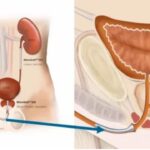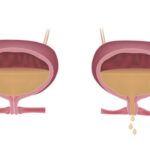
Urinary incontinence is a common condition among women in which they experience loss of bladder control and leakage of urine. It can be caused by a variety of factors and can have a significant impact on a person’s quality of life.
Pregnancy and Childbirth
One of the most common causes of urinary incontinence in women is pregnancy and childbirth. During pregnancy, the weight of the growing fetus can put pressure on the bladder and weaken the pelvic muscles. Childbirth can further stretch and damage these muscles, making it more difficult to control the bladder. As a result, many women experience urinary incontinence after giving birth.
Menopause.
Another common cause of urinary incontinence in women is menopause. As a woman goes through menopause, her body produces less estrogen, which can cause changes in the urinary tract and lead to incontinence. These changes can cause the muscles in the bladder and urethra to weaken, making it harder to hold urine in the bladder.
Obesity
Obesity is also a risk factor for urinary incontinence in women. Excess weight can put pressure on the bladder, making it more difficult to control the flow of urine.
Neurological conditions
Other causes of urinary incontinence in women include neurological conditions such as Parkinson’s disease, multiple sclerosis, and spinal cord injuries, as well as certain medications that can affect bladder control. In some cases, urinary incontinence can also be caused by a structural problem in the urinary tract.
Treatment options for urinary incontinence in women will vary depending on the underlying cause of the condition. Incontinence can be treated with pelvic floor muscle exercises, also known as Kegel exercises. These exercises help to strengthen the muscles that support the bladder, which can help to improve bladder control. Additionally, Biofeedback therapy and electrical stimulation may also be effective in improving muscle strength.
For some women, medication or certain medical devices such as urethral inserts may be recommended as a treatment option. Surgery may also be considered in certain cases, particularly when an underlying structural problem is causing incontinence. It is important to note that incontinence can be a symptom of the underlying medical condition, so it is always recommended to see a healthcare professional for diagnosis and treatment. With the right diagnosis and treatment, urinary incontinence can be managed and the quality of life can be improved.




